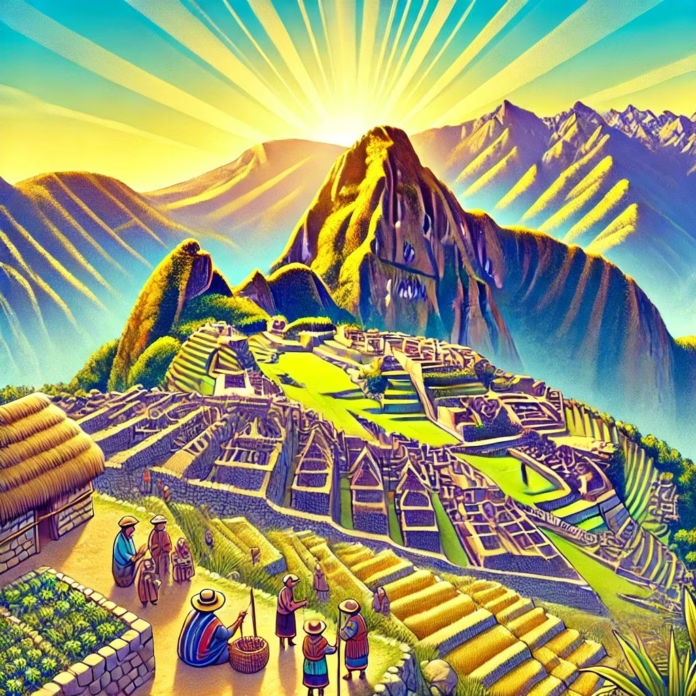The Inca civilization, one of the most remarkable empires in history, rose to power in the Andean region of South America. From their capital at Cusco, they built an empire that stretched over 2,500 miles, encompassing modern-day Peru, Ecuador, Bolivia, Chile, Argentina, and Colombia. Known for their architectural achievements, agricultural innovations, and administrative efficiency, the Incas left an enduring legacy that continues to inspire awe. This article explores the history, society, achievements, and eventual decline of the Inca Empire.
Origins and Expansion
The origins of the Inca civilization trace back to the early 13th century. According to legend, the empire’s founder, Manco Cápac, was sent by the sun god Inti to establish Cusco as the center of a new civilization. Over time, the Incas consolidated power, initially governing a small city-state. It was under the leadership of Pachacuti Inca Yupanqui in the 15th century that the Inca Empire expanded dramatically.
Pachacuti reorganized the kingdom into the Tahuantinsuyu, or “Land of the Four Quarters,” unifying disparate cultures and regions under a centralized government. This expansion was achieved through a combination of military conquest, strategic alliances, and diplomacy. By the time of its peak, the Inca Empire was the largest in pre-Columbian America.
Society and Governance
Inca society was highly hierarchical and organized. At the top was the Sapa Inca, or emperor, who was considered a divine representative of Inti. Below the Sapa Inca were nobles, priests, and administrators, who oversaw the empire’s vast territory and ensured the loyalty of its diverse population.
The Incas implemented an efficient administrative system. They divided the empire into regions, each governed by local officials under the supervision of the central government. A key feature of this system was the “mit’a,” a labor tax requiring citizens to contribute their work to state projects such as building roads, terraces, and temples.
The Incas excelled in record-keeping despite lacking a written language. They used quipus, intricate arrangements of knotted strings, to record data related to population, agriculture, and taxes. These quipus served as an essential tool for managing the vast empire.
Daily Life
The daily lives of the Inca people revolved around agriculture, religion, and communal activities. The majority of the population were farmers who cultivated crops such as maize, potatoes, quinoa, and coca. The Incas practiced advanced agricultural techniques, including terracing and irrigation, to maximize productivity in the challenging Andean terrain.
Clothing and diet varied by social class. Commoners wore simple garments made from alpaca or llama wool, while nobles adorned themselves with finely woven textiles and gold jewelry. Food staples included maize-based dishes, potatoes, and dried meat, often supplemented by chicha, a fermented maize beverage.
Communal work was a cornerstone of Inca society. Villages operated collectively to build infrastructure, harvest crops, and maintain irrigation systems. This spirit of cooperation ensured that resources were distributed efficiently and that the needs of the community were met.
Religion and Beliefs
Religion played a central role in Inca culture. The Incas were polytheistic, worshipping a pantheon of gods associated with natural elements. Inti, the sun god, was the most important deity, symbolizing life and prosperity. Other significant gods included Pachamama (earth goddess) and Viracocha (creator god).
The Incas believed in an interconnected universe where the spiritual and natural worlds were intertwined. Sacred sites, or “huacas,” were scattered throughout the empire, serving as places of worship and pilgrimage. Priests conducted elaborate ceremonies and sacrifices, often involving llamas, to appease the gods and ensure agricultural fertility.
The temple at Coricancha in Cusco exemplifies the Incas’ devotion to their gods. This gold-adorned temple was dedicated to Inti and served as the spiritual center of the empire.
Achievements and Innovations
Architecture
The Incas were master builders, known for their precision in stonework. They constructed cities, temples, and fortresses using massive stones fitted together without mortar, a technique that made their structures incredibly durable. Machu Picchu, the “Lost City of the Incas,” remains a testament to their architectural genius.
Roads and Bridges
The Inca road system, spanning over 24,000 miles, connected the empire’s diverse regions. These roads facilitated communication, trade, and military movement. Suspension bridges made of woven grass were ingeniously designed to traverse the rugged Andean landscape.
Agriculture
The Incas revolutionized agriculture through terracing, allowing them to farm on steep slopes. They also developed sophisticated irrigation systems and storage facilities, ensuring food security across their empire. Their agricultural innovations continue to influence farming practices in the Andes today.
Decline and Fall
The arrival of Spanish conquistadors in the early 16th century marked the beginning of the Inca Empire’s decline. Francisco Pizarro and his forces exploited internal divisions and captured the Sapa Inca Atahualpa in 1532. Despite Atahualpa’s ransom, the Spanish executed him, plunging the empire into chaos.
European diseases, such as smallpox, devastated the Inca population, further weakening their resistance. By 1572, the Spanish had effectively dismantled the Inca Empire, establishing colonial rule in its place.
Legacy
The legacy of the Incas endures in modern Andean culture. Descendants of the Incas continue to speak Quechua, practice traditional farming methods, and celebrate ancient rituals. Archaeological sites like Machu Picchu, Sacsayhuamán, and the Sacred Valley attract millions of visitors annually, offering a glimpse into the grandeur of this lost civilization.
The Inca civilization remains a source of pride and inspiration, showcasing the resilience and ingenuity of a people who overcame harsh environments to create one of the most remarkable empires in history.

